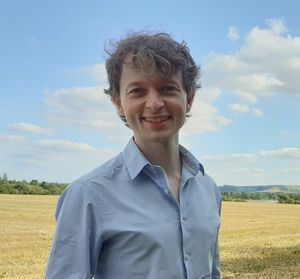March 2022
Yesterday, the Government published its Nature Recovery Green Paper.
It asks the right question: how can sites and species protection be improved?
At the moment, however, you may come to the end of the consultation and ask “what’s the big idea, DEFRA?”.
The document is full of process proposals, intended to change institutions, names, and structures. For a document that expressly says too much attention has been paid to process, there is an irony that its own gaze is fixed firmly on procedures rather than on fixing the big problems affecting nature.
Missing are the big ideas that really could ensure that our sites and species designations play their part in halting nature’s decline. Instead, we find proposals that could vest too much power in the hands of politicians, and potentially weaken the legal safeguards that defend our most vulnerable sites and species.
New designations
DEFRA would like to rationalise the current array of sites and species designations.
For sites, the Government is proposing to merge SSSIs (national protected sites) with SACs and SPAs (European protected sites). A new system might divide sites into highly protected and protected areas. This could be structured in a few different ways: by bolstering protection for a few sites (option 1); simply renaming them as highly protected (Ramsar sites, SACs and SPAs) and protected (SSSIs) (option 2); or creating a single designation with a sliding scale of protection (option 3).
For species, the Government is proposing three tiers of protection: minimum management (safeguarding welfare, with additional options concerning trapping, killing, hunting); protected (with additional protection from killing, possession, disturbance and trade); and highly protected (which also protects ecosystems, similar to the rules for European Protected Species).
There are some positives:
Overall, though the impression is of a consultation focused on simplifying process, repatriating procedures, and reducing regulation, rather than one that could really bring our protected sites and species protections up to scratch.
Legal responsibilities and accountability
Simplification brings with it a number of important risks.
The first is simply delay. We have eight years to achieve the tremendous task of halting the decline of wildlife. If several years are taken up simply rearranging the designation deck chairs, then valuable time could be lost. The first symptoms of this are already apparent: the Government’s excuse for not setting a target to improve the condition of protected sites is that it is reviewing protected sites designations. In other words, this exercise in rebadging protected sites could actually stand in the way of measures to improve protected sites.
The second is more substantive. The Green Paper includes proposals to do away with the more “legalistic” features of the current regime, particularly the rules regarding Habitats Regulations Assessment, which derive from the Habitats Directive. We know that the Government believes Natural England is “distracted by highly prescriptive legal processes” and wants to free up “exceptional technical expertise” to “prioritise interventions that will make a difference”. But the Green Paper is silent as to what those are. Instead, it proposes to give more power to individual decision-makers on the ground. These changes are not necessarily negative; a single, integrated system of environmental assessment that pays plenty of heed upfront to scientific advice would be welcome. But these rules have often proven the last line of defence for our most important wildlife sites against unsuitable or unsutainable building development, and should not be meddled with lightly.
In a further assault on “process over discretion”, the Government is proposing to make Ministers responsible for final decisions on whether or not to designate a protected site. Contrary to promises of being led by scientific evidence, this would allow politicians to stop important sites from being designated, even if they meet every threshold of scientific significance.
So what should DEFRA do?
The overriding impression of the Nature Recovery Green Paper is that it may achieve very little by way of nature recovery. In some areas, it may bring the benefits of simplicity; in other areas, it may close off important avenues of legal accountability.
It is highly unlikely to deliver the big change for protected sites and species that is needed for nature’s recovery. And change is needed. There is strong scientific evidence that the UK’s most important wildlife designations (SACs and SPAs) really do work. But only 38% of SSSIs are in favourable condition. And wildlife continues to decline, despite the protection conferred by the Wildlife and Countryside Act. Sites like Swanscombe Peninsula can still be passed over for protection and, even when they are designated, they can still be subject to harmful development.
So what should DEFRA do? There are the seeds of some big ideas in the Green Paper, which should be allowed to grow before a White Paper is published. And they have their roots in Sir John Lawton’s old mantra of more, bigger, better, joined up protection.
Perhaps, then, we can look forward to a Nature Recovery White Paper that lives up to the name.
Richard Benwell is CEO at Wildlife and Countryside Link.
Follow: @RSBenwell and @WCL_News
The opinions expressed in this blog are the author's and not necessarily those of the wider Link membership.




Latest Blog Posts
March 2022



Latest Blog Posts